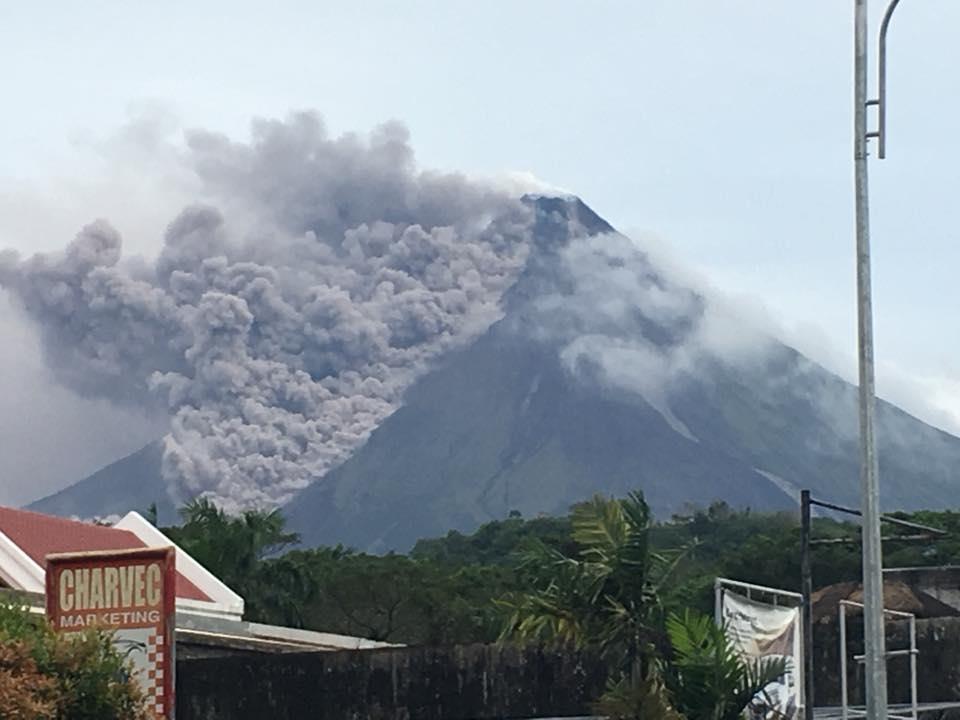MANILA, Jan. 17 (Xinhua) -- The Philippines' most active volcano Mayon continues to ooze lava and shoot up plumes of hot ash, prompting authorities to force thousands of people living around the volcano to move to safety, the Philippine volcanology institute said on Wednesday.
Orange lava fragments glowed in the dark for the third night as they trickle down the mountain slope, sending fear to affected residents but also a joy to tourists who started to flock to Albay, a province on the island of Luzon about 330 kilometers southeast of Manila, to witness the "silent eruptions."
The Philippine Institute of Volcanology and Seismology (PHIVOLCS) said in its Wednesday bulletin that it has recorded 143 "lava collapse events" and a tremor in the past 24 hours.
Aside from Mayon volcano, the institute said that two other volcanoes are also showing signs of restiveness -- Kanlaon volcano in Negros Oriental province in the central Philippines and Bulusan volcano in Sorsogon province, also on the island of Luzon.
Kanlaon Volcano's seismic monitoring network recorded two volcanic earthquakes during the past 24 hours, the institute said.
"Moderate emission of white steam-laden plumes that rose to 300 meters from the summit before drifting northwest was observed during times when the crater was visible," the institute said, adding that slight ground deformation has also been observed.
The institute said alert level 2 prevails over Kanlaon Volcano, "which means that the volcano is undergoing a moderate level of unrest."
It warned the people around Kanlaon volcano to stay away from the 4-km danger zone due to "possibilities of sudden and hazardous steam-driven or phreatic eruptions."
The institute said Bulusan volcano in Sorsogon, 70 km southeast of Mayon volcano, is also "in a state of unrest" that may also lead to "hazardous phreatic eruptions."
"Alert level 1 or abnormal status remains in effect over Bulusan Volcano, which means that it is currently in a state of unrest probably driven by hydrothermal processes that could generate steam-driven or phreatic eruptions," the institute said.
The Philippine sits on a unique tectonic setting ideal for volcano formation.
There are 24 active volcanoes in the Philippines, according to PHIVOLCS. Among these volcanoes, Mayon has a long history of deadly eruptions. It last erupted in August 2014.
In May 2013, at least four foreign tourists and their local tour guide were killed when it spewed a giant ash cloud and a hail of rocks.
